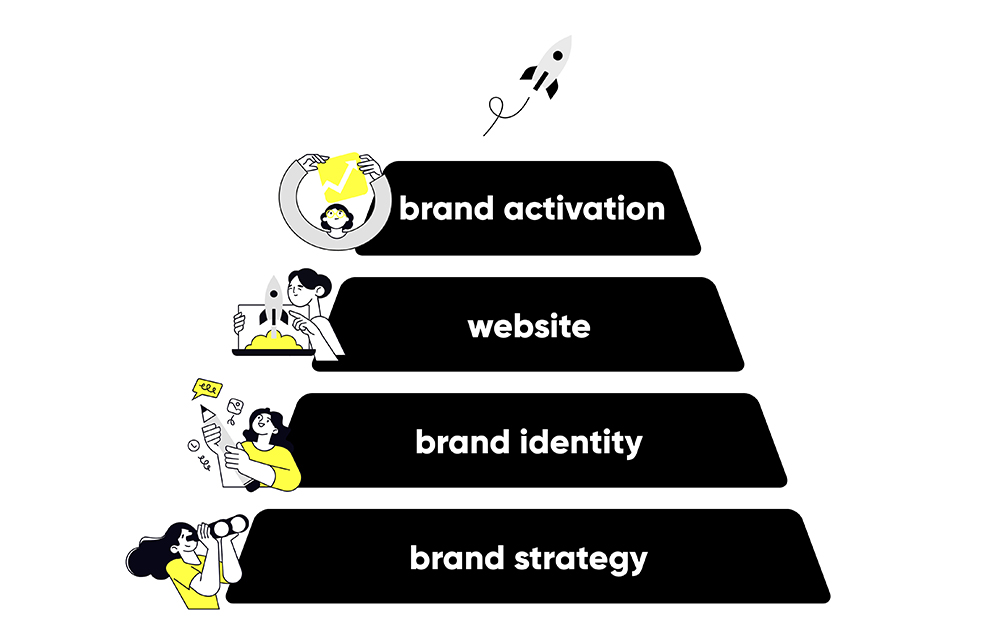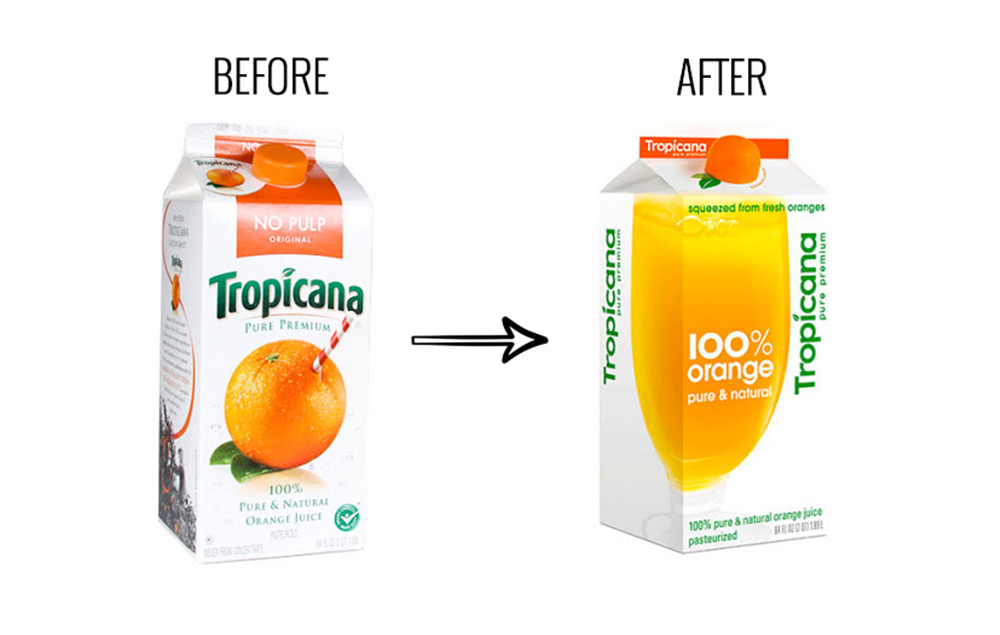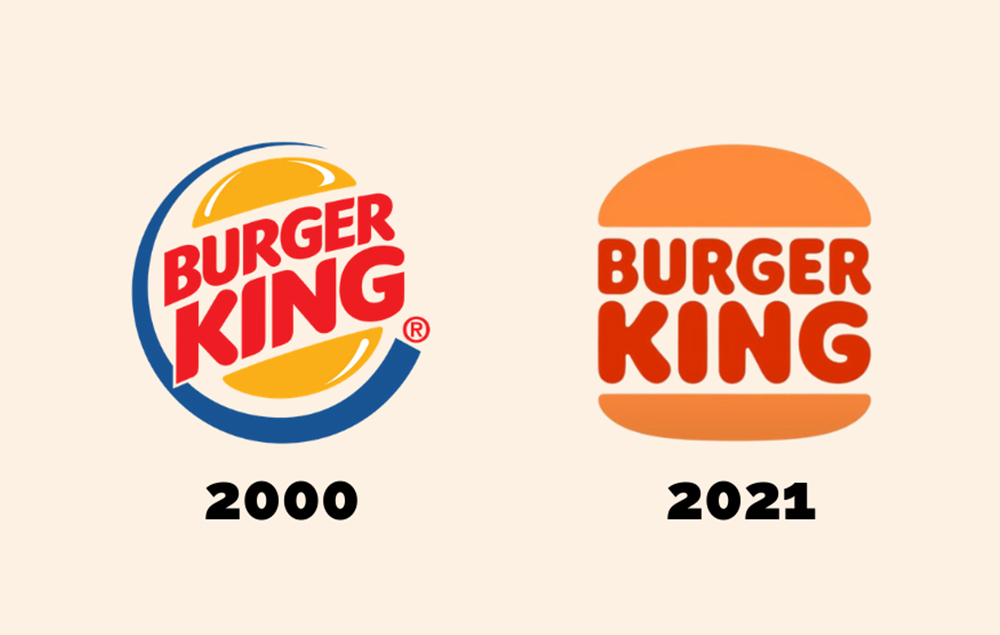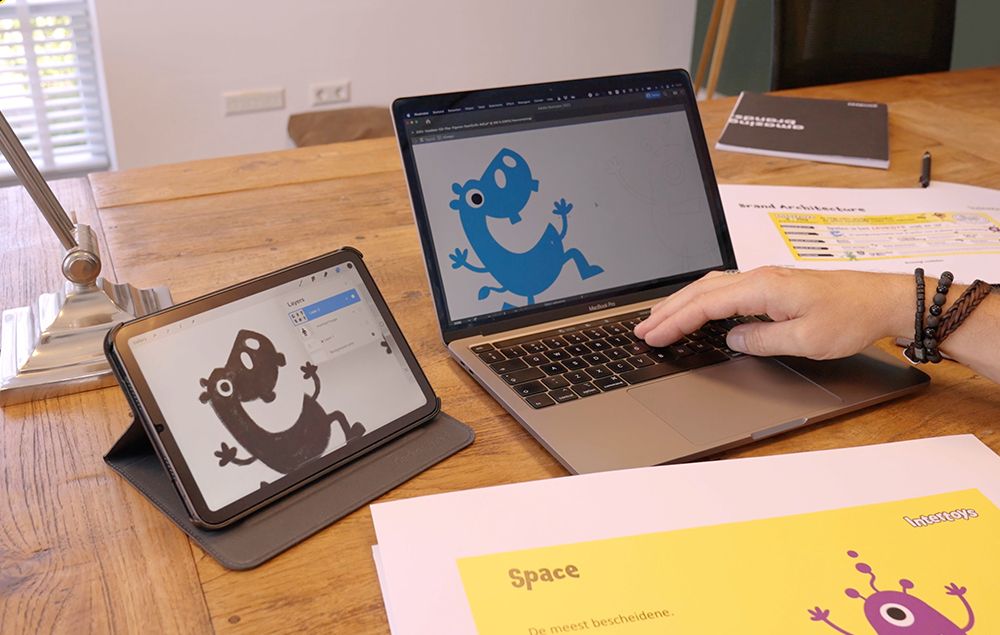-
 Dennis Damen / Brand Strategist
Dennis Damen / Brand Strategist
What is a rebranding?
A rebranding is the process of renewing and repositioning your brand to make it more relevant, more distinctive and more recognizable for your target group. A rebranding offers many benefits for your brand:
- It makes your brand relevant again for your target group.
- It strengthens your positioning and gives your brand direction.
- It helps your brand distinguish from the competition.
- It creates an improved brand identity that matches the current time.
- It increases brand recognition and customer loyalty.
The most important parts of a rebranding
A rebranding consists of different elements that together ensure a consistent and powerful brand experience. These are the most important parts:
- Brand strategy : the foundation of your brand. It determines what you stand for, what you are going and how you distinguish yourself from the competition.
- Brand identity : renewing or improving the logo, use of color, typography and visual language to give look
- Website and other expressions : Make brand expressions such as your website, brochures and presentations recognizable and consistent and connect with your brand strategy .
- Brand activation : actively promote your brand through campaigns, social media and other marketing channels.

Characteristics of a strong rebranding
A strong rebranding is more than just a fresh look. It creates a powerful brand that realizes your ambitions. These are the characteristics of a successful rebranding:
- Consistent and recognizable: the brand is always clear and trusted, regardless of the channel or the message.
- Relevant: the brand appeals to the right target group and is in line with the needs of the market.
- Creative and distinctive: the brand stands out and continues to renew without losing its core.
- Future-oriented: The brand is suitable for the short and long term and continues to develop for permanent success.
Is rebranding always necessary?
Not always. Sometimes a subtle restyling or an adjustment in your brand expressions is enough to breathe new life into your brand. By staying closer to your current brand story and look and working with minor improvements, you can make a safe and more effective choice, especially if your company has already built up strong brand recognition and associations. Here you can read the difference between a restyling and a rebranding:
- Restyling : retains the existing positioning and core message with small adjustments, such as a refined logo or a subtle color change. The goal is a fresh look and tightened brand story without changing the essence of your brand.
- Rebranding : offers larger changes in brand positioning, visual look and communication. It redefines your brand, renews the story and ensures a completely new brand experience to make your brand more relevant in a changing market.
Why choose a restyling?
- Fresh look : renew your brand visually without changing the core.
- Outdated visual identity : modernize your logo, colors or visual language.
- Small strategic adjustments: refine your brand positioning without major changes.
- Maintaining recognition: give your brand a freshening up without losing brand value.
- No change in target group: adjust your brand without taking a different direction.
Why choose a rebranding?
- New brand positioning: does your brand no longer fit your target group or company of today? Reposition.
- Increasing distinctive character: make your brand clearer and more distinctive.
- Improve image: improve your image after a crisis or negative perception.
- New target group or market: focus your brand on a totally new target group or market.
- Product adjustment: redefine your brand for new or major changes in product offerings.
Never underestimate the importance of recognisability
Rebranding offers many benefits, but it is crucial to keep your brand recognizable. Too much change can make all accumulated brand value disappear. The key? Renew your brand without losing the elements that make it distinctive or recognizable.
Whether a subtle restyling is enough for your brand or whether you should go for a complete rebranding depends on your ambition, target group and positioning. Together we dive deep into your brand and provide a solution that perfectly matches your goals, the needs of your target group and the future growth of your brand.
Failed rebranding: Tropicana
Not every rebranding is successful. Tropicana's attempt in 2009 is a well -known example of this. The brand renewed its packaging to come across more modern, but this led to confusion. Customers found it more difficult to recognize the product and the sale dropped considerably. After just two months, Tropicana returned to the old package. This emphasizes the crucial role of recognisability in a rebranding.

Successful rebranding: Burger King
Burger King is a recent example of a successful rebranding. In 2021, the brand reintroduced its retro logo and classic color schemes, combined with campaigns that emphasized quality, sustainability and honesty. By returning to its origins while responding to modern trends, Burger King strengthened its brand positioning and attracted new customers without losing its recognisability.

Strengthen your brand from a solid foundation
Whether you opt for a complete rebranding or a subtle restyling, success starts with a thoughtful approach. Vandeez we call this approach creating a brand fundament. With a strong brand foundation we develop a sharp brand strategy , a unique brand identity , a user -friendly website and powerful brand activation . This foundation ensures that your brand distinguishes itself, remains relevant and communicates consistent and authentic. Whether you make small adjustments or make major changes, a solid brand foundation will prepare your brand for the future.
Ready to boost your brand?
Whether you opt for a restyling or a rebranding, together we create a brand that makes an impact and contributes to realizing your ambitions.
Do you want more information or just with our contact us? Contact us .




























































Be inspired by our cases, insights and market trends.


